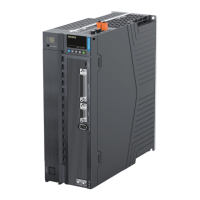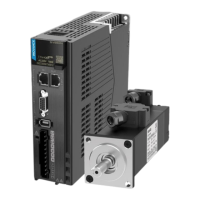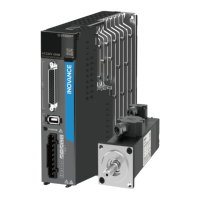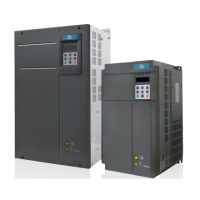Mechanical Installation
‑28‑
Do not put an insulator, such as a pad, between the servo motor and heat sink,
otherwise motor temperature will rise and the motor may fail.
● For vertical mounting with the shaft extension upwards, ensure that no liquid
enters the upper bearing.
● When using a motor with an oil seal, you must lower the oil level to the lip of the
oil seal.
● To prevent excessive wear of the oil seal, leave a small amount of oil on the lip for
lubrication.
● The motor can only be installed on a flat, vibration‑free and distortion‑resistant
support flange surface according to the specified structure.
● Use hexagon socket screws with strength grade of at least 8.8.
● When tightening the fixing screws, prevent the screws from deforming.
● Obey the recommended tightening torque values of motor flange fixing screws.
See the following table "
Table 5–3 Recommended tightening torques for fixing
screws
"
on page 28
.
● For motors with a flange of 180 mm or above, remove or tighten the lifting lugs
after the motor is mounted.
Table 5–3 Recommended tightening torques for fixing screws
Flange Size Screw Qty. and Size Tightening Torque (in N·m)
40 2×M4 2.4
60 4×M5 4.7
80 4×M6 8
100 4×M6 8
130 4×M8 20
180 4×M12 65
Note
● To avoid damage to the motor, do not hit or squeeze the shaft extension.
● To avoid corrosion,
—— When cleaning rust and stains at the end of motor shaft, use ordinary
detergent.
—— Keep detergent away from the bearings and seals.
● Do not soak the oil seal in the oil. Oil inside the servo motor may cause
malfunction.
Installation of the brake motor
After the brake is energized, the electric excitation coil closes and the armature is
released. After the power is cut off, the brake holds the motor shaft through a

